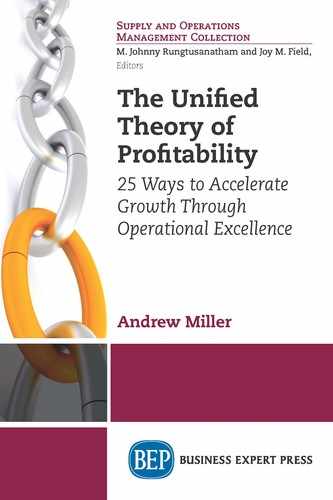Leveraging Your Supply Chain to Generate Profits
Twenty years ago, we used the word “Logistics” to describe everything in a supply chain. I am sure this came from the military that used Logistics departments to manage the replenishment of supplies to the troops. More recently, we started calling it a “supply chain,” because we were moving goods along a chain to get to a final destination.
During this transition in terminology, we also became more sophisticated in how supply chains were operated and managed. We went through a period where offshoring was the only way to operate—contracting out manufacturing to those countries where the labor costs were lower. Then we realized that having our products made halfway around the world poses some challenges, not the least of which were management of the contract manufacturer and lead times getting the products to the end customers. Therefore, we began onshoring and nearshoring.
We developed concepts like just-in-time (JIT) and on-demand manufacturing to reduce inventory and customize products. Dell was one of the best examples of this. Fifteen years ago, you could go to the Dell website and create a customized computer that would be assembled and delivered within a few days—a novel concept at the time. Does anyone still use that Dell website to build their own computer? Not many, because personal computers have taken a back seat to other personal devices and we realized that most out-of-the-box computers have more than enough features to satisfy us.
Supply chain management goes through different variations and concepts, but there are a few absolute rules about the supply chain.
Absolute rule #1: The more a product is moved and the longer the lead time, the more your profit margins will erode. Every time you touch a product, it costs you money. The longer you store a product, the more it costs.
Absolute rule #2: The more you empower employees to build quality products, the more quality products you will sell. The concept of having quality control at the end of a manufacturing process makes no sense. What if you could have identified the quality issue earlier on?
Absolute rule #3: The faster you can deliver on a quality product, the more value it has to your customer. Going back to Figure 19.1, speed to market is a competitive advantage, as long as it is coupled with a quality product.
Note: Quality should be defined as meeting or exceeding customer expectations, not meeting some arbitrary standard.
Absolute rule #4: Sharing information and using it effectively is critical to anticipating and meeting demand. I call this applied wisdom. There is no shortage of companies losing money because products that customers wanted were not available or that use information incorrectly. There are also many companies that collect the wrong data or too much, and then get overwhelmed trying to translate that data into something useful.
Absolute rule #5: The longer a product sits in inventory, the lesser value it has. I have worked with companies where some products have become obsolete because they were lost in a warehouse or the turnover was too slow.
When you are evaluating your supply chain or building one from scratch, you need to remember these absolutes. They will form the foundation of a supply chain that focuses on value, speed, and getting the product in the hands of your customers.
To put them differently, you need to:
• Minimize the number of touch points in your supply chain;
• Empower employees to take accountability for the quality of the product;
• Ensure you provide speed to market;
• Use information effectively; and
• Get your inventory out of your warehouse as quickly as possible.
Follow these five absolutes and you will have a supply chain that makes you money, not one that costs you money.
